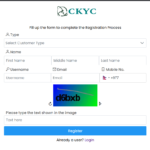As a small business owner in Nepal, you face unique challenges in today’s digital landscape. The rapid pace of technological change presents both opportunities and obstacles for your enterprise. By embracing e-commerce strategies and digital tools, you can expand your reach, streamline operations, and drive growth in an increasingly connected marketplace. This article will guide you through practical steps to transform your business digitally, from leveraging social media marketing to implementing e-commerce platforms and adopting financial technologies. Discover how Nepali SMEs like yours are successfully navigating the digital frontier and positioning themselves for success in the global economy.
The Potential of E-Commerce for Nepali SMEs
Rapid Growth and Market Expansion
E-commerce in Nepal is experiencing a surge, with the market projected to grow from $100 million to an impressive $1 billion in the next three years. This exponential growth presents a golden opportunity for small and medium enterprises (SMEs) to expand their reach and tap into a burgeoning digital consumer base. By embracing e-commerce, Nepali SMEs can transcend geographical limitations and access a wider customer pool, potentially boosting their sales and profitability.
Overcoming Traditional Challenges
E-commerce offers a lifeline for SMEs facing challenges in the traditional business landscape. With 10.81% of Nepali SMEs collapsing due to the COVID-19 pandemic, online platforms provide a resilient alternative. Digital storefronts require less capital investment than physical stores and can help businesses weather economic downturns. Moreover, e-commerce enables SMEs to streamline operations, reduce overhead costs, and improve efficiency.
Leveraging Digital Tools for Growth
The digital transformation journey for Nepali SMEs extends beyond just setting up an online store. Companies like Braindigit offer comprehensive e-commerce solutions, including website development, mobile apps, and digital marketing services. These tools empower SMEs to enhance their online presence, engage customers effectively, and compete in the digital marketplace. Additionally, the rise of digital payments in Nepal, now accounting for 80% of some businesses’ sales, further facilitates seamless online transactions.
How to Set Up an Online Store for Your Business
Choose Your E-commerce Platform
Setting up an online store for your Nepali business starts with selecting the right e-commerce platform. Popular global and local options like Amazon, Alibaba, Daraz, and Gyapu are already operating in Nepal. Consider factors such as ease of use, customization options, and integration capabilities when making your choice. Look for platforms that offer features like secure payment gateways, inventory management, and mobile responsiveness to ensure a smooth shopping experience for your customers.
Register Your Business
Before launching your online store, it’s crucial to register your business with the appropriate authorities. This process typically involves:
- Registering with the Department of Cottage and Small Industries or the Department of Commerce
- Obtaining a PAN certificate from the Inland Revenue Department
- Registering with the Department of Customs if you plan to import or export goods
- Affiliating your business with the Cottage and Small Industries Department
Consider seeking assistance from legal experts to navigate the registration process and ensure compliance with all relevant regulations.
Build Your E-commerce Website
Once registered, focus on developing a strong brand identity and creating your e-commerce website. You can either use pre-built platforms or opt for custom development, depending on your budget and specific needs. Ensure your website is user-friendly, visually appealing, and optimized for search engines. Integrate reliable payment gateways and partner with reputable courier companies to handle logistics and delivery efficiently.
Digital Marketing Strategies to Promote Your E-Commerce Site
Leverage Social Media Platforms
In today’s digital landscape, social media is a powerful tool for Nepali small businesses. Establish a strong presence on relevant platforms to connect with your target audience. Create engaging content that showcases your products and brand personality. Consider using buy buttons and direct links to streamline the purchasing process, making it easier for customers to shop directly from social media posts.
Implement Search Engine Optimization (SEO)
Optimize your e-commerce website for search engines to improve visibility and drive organic traffic. Focus on relevant keywords, create high-quality product descriptions, and ensure your site structure is search-engine friendly. This strategy helps expand your market reach and attracts potential customers actively searching for products like yours.
Utilize Email Marketing
Personalize your email marketing campaigns to re-engage online shoppers and nurture relationships with existing customers. Send targeted newsletters, exclusive offers, and product recommendations based on customer preferences and browsing history. Implement an email recovery strategy to encourage customers to complete abandoned purchases, reducing cart abandonment rates.
Embrace User-Generated Content
Encourage customers to share reviews, testimonials, and social media posts about your products. User-generated content builds trust and credibility, helping potential customers make informed purchasing decisions. Display this content prominently on your website and social media channels to showcase real-world experiences with your products.
Leveraging Social Media to Connect with Customers
In today’s digital landscape, social media has become a game-changer for Nepali small businesses looking to expand their reach and engage with customers. With over 11 million Facebook users in Nepal, platforms like Facebook, Instagram, and Twitter offer unprecedented opportunities to connect with your target audience.
Building Brand Awareness and Trust
Social media allows you to showcase your products, share your brand story, and establish credibility. By creating high-quality, relevant content, you can build brand loyalty and trust among potential customers. Consider using a mix of text, images, and videos to keep your audience engaged.
Targeted Advertising and Analytics
One of the key advantages of social media marketing is its precise targeting capabilities. You can reach specific segments of the Nepali population most likely to be interested in your offerings. Moreover, social media platforms provide detailed analytics, allowing you to track your performance and optimize your marketing efforts.
Engaging with Customers in Real-Time
Social media enables direct, real-time engagement with your audience. Respond promptly to comments and messages, run contests or giveaways, and use features like live streaming to create interactive experiences. This two-way communication helps build stronger relationships with your customers and fosters brand loyalty.
By leveraging these strategies, Nepali small businesses can harness the power of social media to drive growth, increase brand visibility, and ultimately boost sales in the digital marketplace.
Key E-Commerce Trends and Innovations for Nepali Businesses
Augmented Reality and Personalization
As e-commerce in Nepal continues to evolve, augmented reality (AR) shopping experiences are redefining the online journey. AR allows customers to virtually visualize products before purchase, enhancing confidence in online shopping. Alongside AR, personalized product recommendations based on customer data and preferences are optimizing the shopping experience, increasing conversion rates, and fostering loyalty for Nepali e-commerce businesses.
Voice Commerce and Digital Payments
Voice commerce, powered by virtual assistants, is revolutionizing how Nepali consumers interact with e-commerce platforms. This technology enables browsing, ordering, and tracking shipments using voice commands, making online shopping more accessible. Additionally, the development of digital payment solutions is crucial for the sector’s growth. While cash on delivery remains popular, the expansion of reliable payment gateways is essential for meeting growing customer expectations and driving revenue growth.
Expanding Product Diversity and Market Reach
E-commerce in Nepal has expanded beyond electronic goods and clothing to encompass a diverse range of products, including traditional household items, agricultural supplies, and artistic creations. This diversification presents opportunities for small and medium-sized enterprises to expand their reach and connect with customers nationally and globally. By leveraging e-commerce platforms, Nepali businesses can showcase their unique products and services to a wider audience, promoting economic development and financial inclusion.
Conclusion
As you embark on your digital transformation journey, remember that success lies in strategic implementation and continuous adaptation. By leveraging e-commerce platforms, digital marketing tools, and financial technologies, your Nepali SME can expand its reach, streamline operations, and drive growth in an increasingly digital marketplace. Embrace this shift as an opportunity to innovate and stay competitive. While challenges may arise, the potential rewards far outweigh the initial hurdles. Start small, learn from your experiences, and gradually build your digital presence. With persistence and a willingness to evolve, your business can thrive in the digital era, contributing to Nepal’s economic development and your own entrepreneurial success.
Key E-Commerce Trends and Innovations for Nepali Businesses
Augmented Reality and Personalization
As e-commerce in Nepal continues to evolve, augmented reality (AR) shopping experiences are redefining the online journey. AR allows customers to virtually visualize products before purchase, enhancing confidence in online shopping. Alongside AR, personalized product recommendations based on customer data and preferences are optimizing the shopping experience, increasing conversion rates, and fostering loyalty for Nepali e-commerce businesses.
Voice Commerce and Digital Payments
Voice commerce, powered by virtual assistants, is revolutionizing how Nepali consumers interact with e-commerce platforms. This technology enables browsing, ordering, and tracking shipments using voice commands, making online shopping more accessible. Additionally, the development of digital payment solutions is crucial for the sector’s growth. While cash on delivery remains popular, the expansion of reliable payment gateways is essential for meeting growing customer expectations and driving revenue growth.
Expanding Product Diversity and Market Reach
E-commerce in Nepal has expanded beyond electronic goods and clothing to encompass a diverse range of products, including traditional household items, agricultural supplies, and artistic creations. This diversification presents opportunities for small and medium-sized enterprises to expand their reach and connect with customers nationally and globally. By leveraging e-commerce platforms, Nepali businesses can showcase their unique products and services to a wider audience, promoting economic development and financial inclusion.



